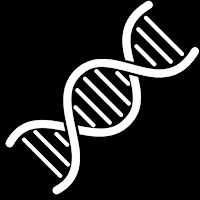Prosthetic arms for much of the 20th and 21st century looked like more sophisticated devices while prosthetic legs were running in the olympics arms were being left behind. It's quite a challenging product to develop. It's not going to replace or surpass a human hand but is a tool ultimately to assist you. Prosthetic developers must have to make it extremely functional but easy to use.
Since the early 2000s private companies governments and research labs are developing prosthesis that are more functional and a lot more advanced than previous designs.
Easton la chapelle, founder and ceo of unlimited tomorrow designed, tested and adopted his prosthetic arm product. He said that the landscape of prosthetic offerings today, is quite a spectrum. There are different type of classes in prosthetics products.
There's very simple passive devices that look like a hand but they don't have any type of movement or function beyond just aesthetics or cosmetics. This was the classic kind of hook and claw system usually you shrug your shoulder kind of move your body to be able to close an open claw.
Then the next class is quite a wide one where it go into the myoelectric more robotic class and then beyond that, we get into the research level where these are these brain control devices that universities are developing.
Developmental Stages of TrueLimb Prosthetic Arm
Prototype 1
Easton started with his very first robotic hand prototype that he made in 14. He used a lot of simple household items like legos and electrical tubing. At that point it was very basic but this essentially validated that we could use motors and tendons to open and close fingers.
Prototype 2
Next model was made by him back in 2012 that was infancy of the consumer 3d printing world. It was very similar concept where they have servo motors that essentially pull tendons, fishing lines for the increased grip with little finger pads and that was far more functional to pick up things accurately and do a little bit more real-life tasks with it.
Prototype 3
Their next prototype was a little more sci-fi it used an eeg headset which measured brain waves to control the prosthetics. It was called a robo arm and had a lot of the concepts kind of rolled into one here. He found a lot of benefit working with tendant systems compared to other mechanical designs. A lot of other devices on the market use linkages and so then when they looked at tendons and especially the individual finger joints essentially they want to eliminate the cognitive bandwidth that someone experiences when using a prosthetic.
Prototype 4
Their next design went back to the basics getting rid of the headset and focusing instead on a 3d printed material with a tendon system design. Learning from years of prototyping bundling it all into a single design. The socket is the hardest part of a prosthetic and if it doesn't fit right no one's going to use it.
This prototype was actually a replica for a small girl name momo. They would send webcams and 3d scanners and xbox kinects down to her house in florida where her mother would scan her residual limb and then we would generate a socket which is how the device attaches to the person. Then there's a small band that would read your muscles and then from there she's able to open and close the hand change the grips. Prosthetic developers still utilize today of how can they create these natural feedback loops to the brain that want to supplement the brain.









